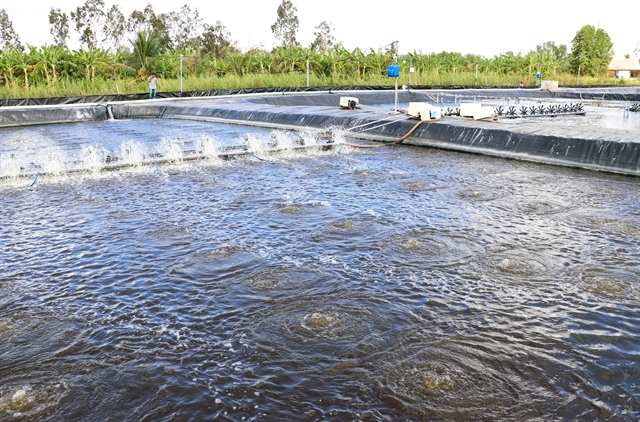 Society
Society

 |
| Super-intensive shrimp farming ponds use advanced techniques to breed white-legged shrimp in Cà Mau Province. — VNA/VNS Photo Huỳnh Anh |
CÀ MAU — The Mekong Delta Province of Cà Mau is developing shrimp farming models that generate large outputs but are environment-friendly.
They include super-intensive, intensive, shrimp-rice, and shrimp-forest models.
The country’s largest shrimp producing province has 280,000ha of ponds and an annual output of 200,000 tonnes, or nearly 40 per cent of the country’s total area and 22 per cent of output.
To increase output for export, the province is zoning farming areas and applying advanced techniques to cope with climate change.
It is developing shrimp farming to international standards such as global good agriculture practices, Aquaculture Stewardship Council and Best Aquaculture Practices, according to its Department of Agriculture and Rural Development.
The province, in co-operation with relevant agencies and companies, started a project to expand shrimp farming in mangrove forests to adapt to climate change at the beginning of this year.
The project is implemented on 2,500ha and 700 local households in Năm Căn District’s Lâm Hải Commune are participating in it.
Lê Văn Sử, deputy chairman of the provincial People’s Committee and chairman of the Việt Nam Sustainable and Clean Shrimp Alliance, said the alliance would strengthen advocacy activities to enhance public awareness of growing mangrove forests, and provide loans to women, mobilise stakeholders to help change policies, and work with companies to implement the project.
The Southern Shrimp Joint Stock Company would supply quality shrimp seeds to farmers and develop an organic shrimp value chain from seed production to export, he said.
“Cà Mau is severely affected by climate change, especially shrimp farming in coastal areas. Therefore, the province needs strategies and projects to improve the lives, incomes and adaptability of shrimp farming households.”
The province has advantages for developing shrimp farming, especially under the shrimp-rice and shrimp-forest farming models.
Cà Mau seeks to be the largest shrimp breeding hub in the country under its plan for 2021-30.
It aims to increase the super-intensive shrimp farming area from 4,800ha now to 5,000ha – with an average annual yield of 22 tonnes per hectare – in 2025 and 8,000ha in 2030.
Most existing super-intensive shrimp farms belong to households and are of small scale.
The province is creating favourable conditions to attract companies to shrimp breeding.
The People’s Committee has instructed the Department of Agriculture and Rural Development to review zoning of shrimp farming areas and warn farmers to follow instructed processes to ensure biosafety and environment-friendliness.
The department should seek to reduce the initial production costs for super-intensive shrimp breeding in concentrated farming areas, it said.
The province exported US$1.2 billion worth of shrimp last year to 60 countries and territories, with the US, Japan, EU, and China being the main buyers. — VNS




